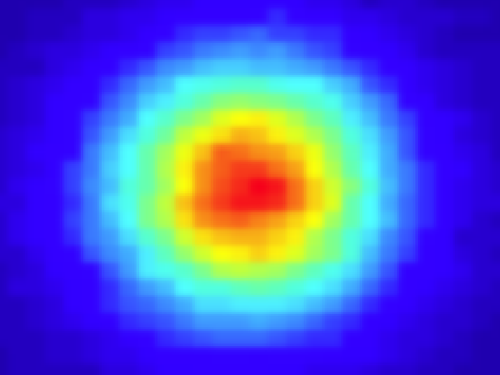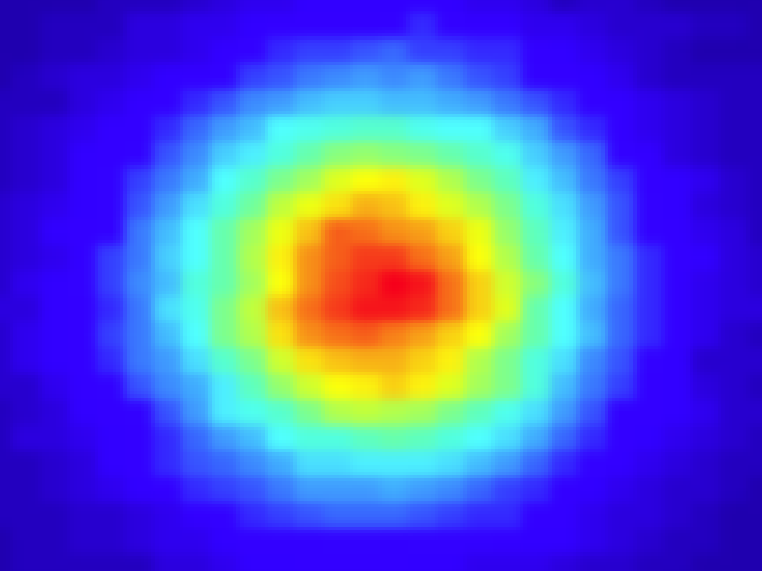Choose the Number of Atoms in Your Cloud
To make precise measurements of time, gravity, or other phenomena, researchers often exploit the wave nature of atoms in experiments that require repeated measurements of cold clouds of atoms. A new method for repeatedly producing near identical clouds of millions of atoms will reduce uncertainty in these measurements. The technique involves a rapid feedback system, where the number of atoms is precisely measured, adjusted, and then measured again. Creating similar atom clouds reproducibly could improve the performance of atomic clocks and other high-precision measurements.
Atom interferometers take advantage of the wave nature of matter and are used to make extremely sensitive measurements of time, magnetic fields, and the values of fundamental constants. They have also been used extensively in the study of gravity and have even been proposed as a method for detecting and measuring gravitational waves. Repeating a measurement with an atom interferometer usually means using a different number of atoms, which adds to the uncertainty. In recent years, researchers have developed several ways to precisely select up to about a thousand atoms, but repeatedly and precisely preparing a larger sample with a specified number of atoms (in the millions) has remained a challenge.
Now Andrew Hilliard of Aarhus University in Denmark and his colleagues have demonstrated a system for preparing a large cloud of a specific number of atoms with low uncertainty. The team says that their technique reduces the variation from one run to the next from around 10% to less than 0.1%.
The researchers first produce an ultracold cloud of rubidium atoms in a magnetic trap. They determine the initial number of atoms via Faraday imaging, a minimally disturbing technique that measures the refractive index of the atom cloud. They take 50 of these images in quick succession in order to increase precision. To execute the next steps rapidly, before many atoms leak from the trap, the team uses an integrated circuit called a field-programmable gate array (FPGA), rather than a conventional computer. The FPGA calculates the number of atoms from the images and determines how many atoms to remove. It then triggers a rapid series of radio frequency pulses, each of which momentarily weakens the magnetic trap long enough for a small number of atoms to escape. A second set of 100 Faraday images confirms the final atom count, and another technique called absorption imaging provides a final check. The team attributes their high precision to the combination of many Faraday images and a rapid feedback system for removing atoms.
The experiment begins with a cloud of 6.7 million atoms on average, a number that can then be decreased to whatever the experimenters choose. Under optimal conditions, the relative uncertainty in atom number at the end of the experiment is 0.025%, which for a final count of 5 million atoms translates to plus or minus 1250.
The team says that their procedure could eventually provide a major boost to the precision of atom interferometry. According to Andrea Bertoldi of the Optics Institute Graduate School in Bordeaux, France, the new technique represents a “technologically challenging experiment.” He says that the technique could improve the performance of state-of-the-art atomic clocks and inertial sensors, and it might eventually assist in the observation of hard-to-detect phenomena such as gravitational waves.
This research is published in Physical Review Letters.
–Leah Crane
Leah Crane is a freelance science writer in Chicago.





